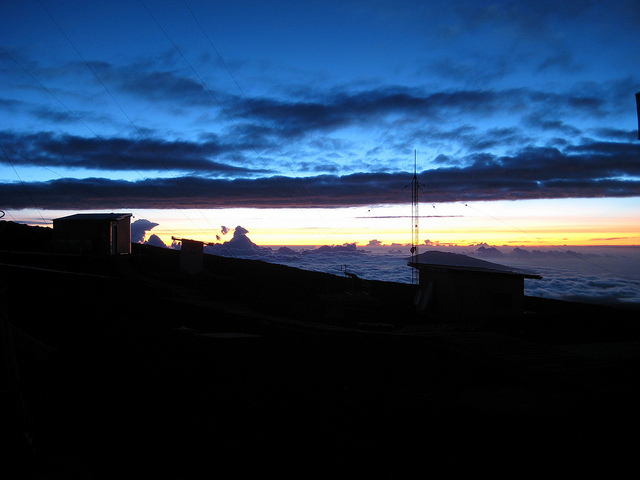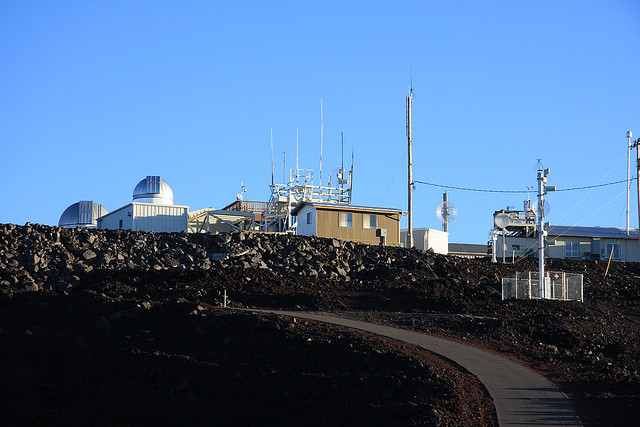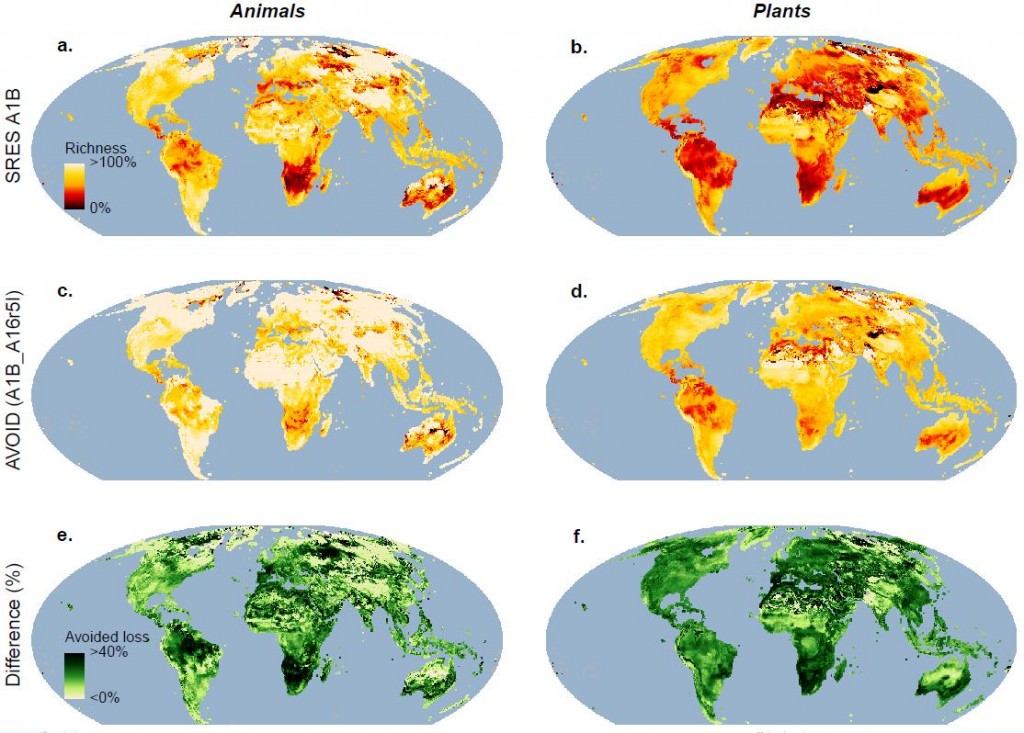Handing over the „Tree of Hope“
 The „Tree of Hope“ had a long and fruitful journey. First we planet it at the climate summit in Doha in December 2012. And now it grew at the 1st World Youth Sustainability Summit 2013 in Berlin. The tree is actually not a real tree. It’s trunk is made from garbage and the crown from green paper leafs filled with the wishes, demands and ideas of people from all over the world.
The „Tree of Hope“ had a long and fruitful journey. First we planet it at the climate summit in Doha in December 2012. And now it grew at the 1st World Youth Sustainability Summit 2013 in Berlin. The tree is actually not a real tree. It’s trunk is made from garbage and the crown from green paper leafs filled with the wishes, demands and ideas of people from all over the world.
It’s a beautiful and complex tree, meant to be a demand against mankinds extravagantly and unecological lifestyle. People should see the tree, read the leafs and think about their own daily routines. All 160 participants of the Youth Sustainability Summit collected the wishes and demands from friends and siblings in the 31 countries they call home. The tree grew upto 4 meters yesterday at the Brandenburg Gate in the centre of Berlin. And it grew more leafs as citizens and tourists also started to write on leafs.
 Besides the „Tree of Hope“ we used a 10qm blanket to illustrate the ecological foot- and hand-print everybody has. The foot-print depends on the way people live and how they consume things. The hand-print shows that it’s possible to fight against climate change. So we asked people to leave a colourfull print of feed and hands on the white blanket. The action was a success, it ended with a gala at the Allianzforum (Read the post by Mourad Farahat) where a nice breeze shook the leafs of the trees.
Besides the „Tree of Hope“ we used a 10qm blanket to illustrate the ecological foot- and hand-print everybody has. The foot-print depends on the way people live and how they consume things. The hand-print shows that it’s possible to fight against climate change. So we asked people to leave a colourfull print of feed and hands on the white blanket. The action was a success, it ended with a gala at the Allianzforum (Read the post by Mourad Farahat) where a nice breeze shook the leafs of the trees.
The leafs are filled with all kinds of demands, as you can see on the pictures. The ideas and wishes very much depend on where the writer comes from. You can imagine that a person from a developing countries shares quite different hopes as someone from a industrialized country.
We hope that all our wishes and demands will come true. That’s more than important to leave our children and grandchildren a world that is worth living. The way we live today destroys the future. I personally want to live in a world where nature has a more important role again and not only profit. I wish for more green spaces in cities, more room for bicycles and children to play. The „Tree of Hope“ is now in the hands of the German Environmental Minister Peter Altmaier. We hope for results.
Written by Anke Britta Schmidt, youthinkgreen Osnabrück /ke
Live like millions of years ago?

CO2 levels are measured on Mauna Loa volcano as the air is of very good (clear) quality up here (Photo: LCDR Eric Johnson, NOAA Corps)
You might not have realized it, but last Friday something quite historical happened: For the first time since the Pliocene (about five to three million years ago) CO2 concentration in the atmosphere crossed the 400 parts-per-million limit. The last time that much carbon dioxide was in the atmosphere, the Arctic was ice-free, the Sahara desert was a savanna and the sea level was 40 meters above today’s level.

NOAA’s observatories on dead Mauna Loa volcano, Hawaii, where atmospheric CO2 levels are monitored (CC BY SA 2.0: sharloch)
Measuring this carbon level is kind of a family business: More than 50 years ago, Charles Keeling started measurements on the dead Mauna Loa volcano, where air quality is very good. Back then, in 1958, CO2 concentration was around 315 ppm – compared to 280 ppm on preindustrial level. Today, his son Ralph Keeling continues the measurements.
The overall trend is increasing, though CO2 levels fluctuate periodically from winter to summer season, when plants naturally fix more carbon dioxide due to leaf growth. Scientists attribute this overall increase to anthropogenic CO2 emissions – mainly from burning fossil fuels.
Within the last ten years, CO2 concentration has risen by two ppm per year. If the world continues emitting carbon at this pace, the next important threshold is not far away (german link). CO2 concentration may not rise upon 445 ppm CO2 (445 molecules of carbon dioxide in one million molecules) if the two degree target is to be met, scientists of the Intergovernmental Panel on Climate Change (IPCC) say.
Watch biodiversity declining
Species will have to move closer together by 2080: both, plants and animals, have to expect dramatical habitat loss due to climate change. If you follow our weekly series on Facebook, where we present animals threatened by climate change every friday, you are likely to know that habitat loss is a common reason for species to go extinct.
Now researchers have quantified this threat of biodiversity: Living spaces will be halved, scientists say, for more than fifty percent of all plants and a third of all animals. For their study they evaluated the fate of 48,786 common animal and plant species across the globe under different global-warming-scenarios.
“While there has been much research on the effect of climate change on rare and endangered species, little has been known about how an increase in global temperature will affect more common species”, says Rachel Warren, lead author of the study, in a press release. “This broader issue of potential range loss in widespread species is a serious concern as even small declines in these species can significantly disrupt ecosystems.”

Species richness in 2080: The geographic ranges of common plants and animals will shrink globally and thus species richness will decline almost everywhere. The top two maps show how species richness declines without mitigation, with the red areas showing the greatest declines. Plants, reptiles and particularly amphibians are expected to be at highest risk. Sub-Saharan Africa, Central America, Amazonia and Australia would lose the most species of plants and animals. The lower four maps show how the declines can be reduced by mitigation. (Credit: Nature Climate Change)
The scientists predicted the species loss with help of computer simulations and climate models – taking different warming scenarios into account. So they also came up with some rather good news: Acting quickly to slow climate change could avoid by 60 per cent of projected losses and give species an additional 40 years to adapt.
If rich biodiversity alone doesn’t serve as an argument for humans to promote mitigation, Warren points out the impact of biodiversity loss on mankind: “There will also be a knock-on effect for humans because these species are important for things like water and air purification, flood control, nutrient cycling, and eco-tourism.”
1st World Youth Sustainability Summit 2013 in Berlin
Young people from all over the world are in Berlin today to take part in the first World Youth Sustainability Summit. The conference is organized by youthinkgreen, an international organization that brings together young folks from 11 different countries, such as Egypt, Brazil, China, India or Germany. They all come from diverse cultural, religious and social backgrounds. The idea behind youthinkgreen is to train the youngsters to become climate ambassadors. They’re meant to use their knowledge to set up and support sustainability projects in the countries they come from.

The Berlin-based organization has some prominent supporters – German Chancellor, Dr. Angela Merkel and UNFCCC Executive Secretary Christiana Figueres and the president of the European Parliament, Dr. Hans-Gert Pöttering.
Over the next ten days, many of the youthinkgreen network’s members will be in Berlin to get in touch with politicians, scientists and residents of the German capital to discuss future challenges.
Youth and Sustainability in Everday Life – Challenge, Rethink and Revive Global Ways of Living
The conference will kick off later today at the Mercator Foundation in Berlin, followed by workshops, speeches and excursions until May 20th. The participants are to visit Berlin’s rubbish collection and sanitation department BSR and popular urban gardening site Prinzessinnengarten. At the Brandenburg Gate, youthinkgreen plans to approach residents and tourists while planting the so called “Tree Of Hope,” an idea that Global Ideas followed during the last Climate Summit in Doha, Qatar in December 2012.
The most urgent questions for youthinkgreen are: what kind of a lifestyle do you support for today, tomorrow, the future? In which aspects are politics, economy and civil society responsible for the organisation of a humane life? Doesn’t the wish for a future socially and ecologically secured belong to the catalogue of human rights?
The result of the summit will be a common position paper written by the participants on “Youth and Sustainability in Everyday Life – Challenge, Rethink and Revive Global Ways of Living.”
You can follow youthinkgreen on facebook and twitter. We’ll come back to the World Youth Sustainability Summit with some young voices from the conference, later this week. Participants will write about their experiences, feelings and the results of the conference.
Taking action against climate change
The term ‘war room’ may conjure up images of leaders huddling over military strategy. But not all conflicts are fought on the battlefield. A corporate initiative called ‘Carbon War Room’ has declared war on climate change by pushing industries such as shipping to reduce emissions while at the same increasing earnings and production. Not convinced? Check out the video.









Feedback